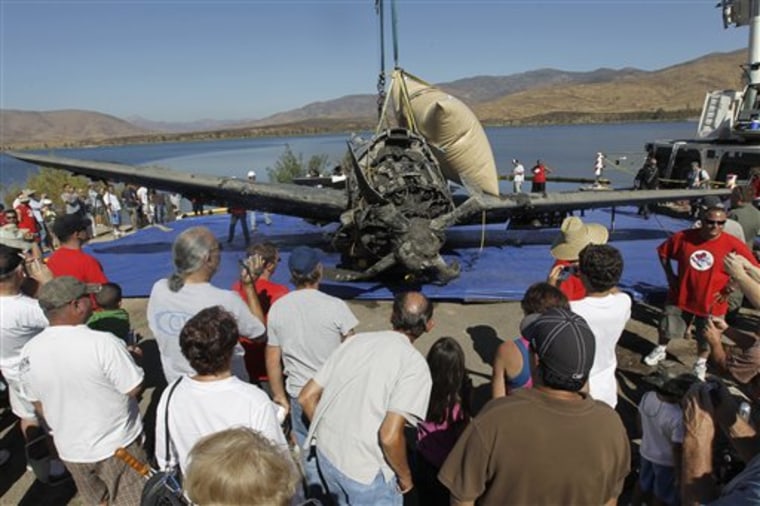In a stunning discovery that bridges the past with the present, a World War II-era Helldiver aircraft has been uncovered after 64 years of submersion in Lower Otay Lake, California. This remarkable find has captivated historians, aviation enthusiasts, and the public, offering a unique glimpse into a bygone era.

The Helldiver, a dive bomber used extensively by the U.S. Navy during World War II, vanished during a training mission in 1950. For decades, its whereabouts remained a mystery, shrouded in speculation and intrigue. The recent uncovering of the aircraft, remarkably intact despite its long immersion, has reignited interest in its story and the events leading up to its disappearance.
Divers exploring Lower Otay Lake stumbled upon the aircraft during a routine survey. The discovery was both unexpected and thrilling, as the lake had been searched before without success. The plane was found lying on its side, partially buried in sediment but still bearing the insignia of its wartime service.

Initial inspections suggest that the Helldiver is in a surprisingly well-preserved state. The cockpit, instrumentation, and even the pilot’s seat are largely intact, offering a rare opportunity for historians and conservationists to study a piece of aviation history. Efforts are now underway to carefully recover and preserve the aircraft, with plans to eventually display it in a museum dedicated to World War II aviation.
This discovery not only sheds light on the technical and historical aspects of the Helldiver but also honors the memory of the pilots who trained and fought in these formidable machines. The story of the lost Helldiver and its 64-year submersion in Lower Otay Lake is a poignant reminder of the enduring legacy of World War II and the men and women who served during that tumultuous time.

As the recovery and preservation process unfolds, the world watches with keen interest, eager to learn more about this remarkable artifact from the past. The Helldiver’s journey from the depths of Lower Otay Lake to its eventual place of honor in a museum promises to be a compelling chapter in the ongoing story of World War II aviation history.





